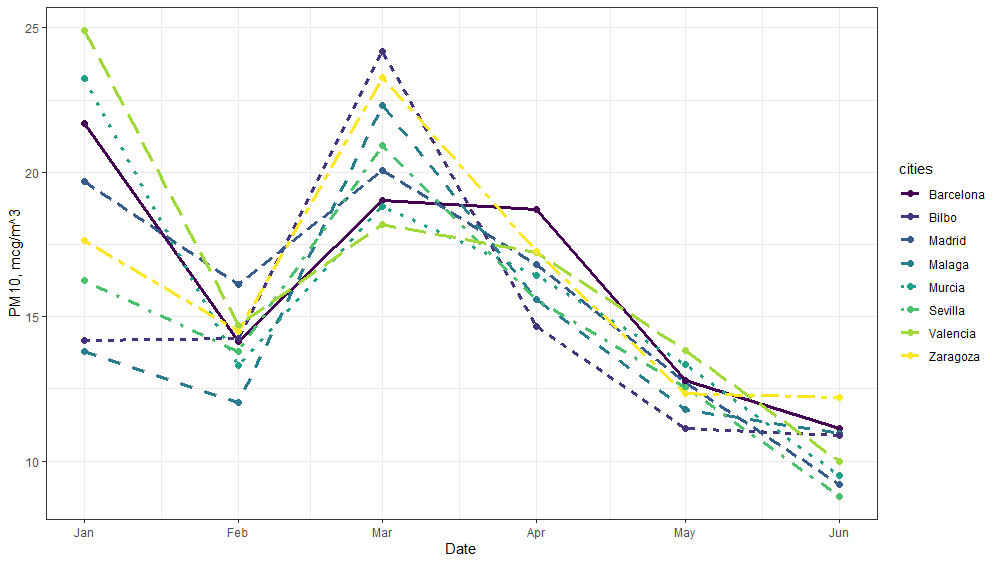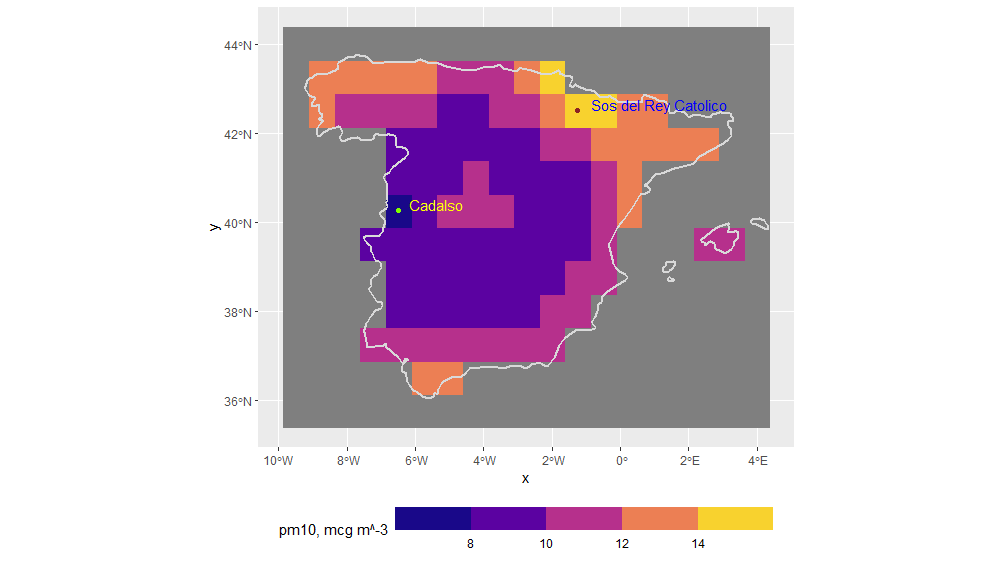Comparative analysis of PM10 concentrations in the atmosphere under restrictive measures COVID-19 in Spain 2019-2020
Amid the coronavirus pandemic, many studies have been published evaluating government decisions to cut business and private activity, resulting in an improved air environment.
However, the such conclusions not always lead to right assessments.
In respect that main amount of pollutants are generated in the city environment and from energy and industrial facilities as rule locating close by there have been short research for 8 largest cities in Spain: Madrid, Barcelona, Valencia, Seville, Zaragoza, Malaga, Murcia, Bilbao.
For analysis there were used data (CAMS global reanalysis (EAC4) monthly averaged fields) for the first half of 2019 and 2020 years from the Copernicus Atmospheric Monitoring Service (CAMS), which provide information on air quality in the framework of the Copernicus program carried out by the European Union to observe the Earth (https://atmosphere.copernicus.eu).
Average monthly distribution of PM10 concentrations on continental part of territory of Spain in 2019 and 2020 shown in Fig. 1
One can see that PM10 concentrations in 2019 demonstrate cyclic. At the same time, a distinctive feature in 2020 was a consistent decrease PM10 concentrations from 21.39 μg / m ^ 3 in March to 9.77 μg / m ^ 3 in June.
For comparison, the average concentration of PM10 in June 2019 was 11.5 μg / m ^ 3.
This is particularly demonstrated in Figure 2 for June 2019 and 2020 and the steady downward trend in concentrations under government restrictions on coronavirus after March 2020.
But, despite the restrictive measures, the total spread of PM10 concentrations by cities in 2020 was higher than in 2019, which is reflected in the graph in Fig. 3 and 4.
More higher average PM10 concentrations for first half of 2020 comparing 2019 fixed not only in cities but on the whole territory of Spain as well.
So, one can see that temporary restriction measures did not allowed to get visible effect even in unusual life conditions. And of course, quarantine is aimed on circulation covid-19 and may not be ecological protection.
Time series summary chart for 2019 and the first half of 2020 (Fig.2.1)
Average annual concentrations of PM10 in the largest Spanish cities for the 6 months in 2019 and 2020 years (Fig.4)
Based on the presented analysis, it is possible to make the following conclusions:
1. Real result of improving air quality requires significant restrictions on environmental protection by politicians and governments.
2. Environmental restrictions can be effective only with the joint actions of a large number of people who are able to form their own restrictions on the use of clean fuels for personal transport like gasoline or electricity, replace cars with mobile devices like a bicycle or scooter, abandon dirty industrial technologies associated with fuel combustion and so on.
3. It is important to initiate the process of shaping ecological thinking through the awareness and involvement of people. The creation of a multitude of information resources across the country, cities and settlements, the expansion of the use of environmental monitoring tools, both ground-based and space-based, allows attracting public attention to environmental problems, changing people's behavioral models, adopting environmental norms and restrictions and, consequently, making the air safe for people.
Expert analyst
Dmitry Slavnikov
Generated using Copernicus Atmosphere Monitoring Service information, 2021
This document has been produced in the context of the Copernicus Atmosphere Monitoring Service (CAMS).
The activities leading to these results have been contracted by the European Centre for Medium-Range Weather Forecasts, operator of CAMS on behalf of the European Union (Delegation agreement signed on 11/11/2014). All information in this document is provided "as is" and no guarantee or warranty is given that the information is fit for any particular purpose.
The users thereof use the information at their sole risk and liability. For the avoidance of all doubt, the European Commission and the European Centre for Medium-Range Weather Forecasts have no liability in respect of this document, which is merely representing the author's view.








